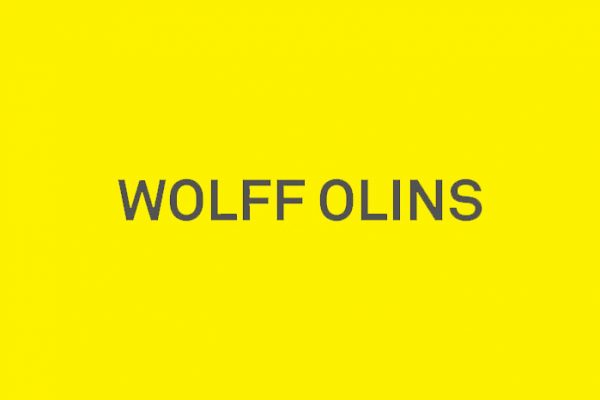A lot of brands end up using Microsoft SharePoint for digital asset management (DAM) almost by accident. You’re already in the Microsoft ecosystem, it just makes sense. If you’re honest with yourself, this might be you.
Regardless of whether or not it is, SharePoint is such a common business tool that it’s legitimately worth asking the question — does SharePoint cut it for brand asset management?
If you hadn’t pieced it together from the title… the answer is no.
With that said, it’s not a blanket no. There are contexts in which SharePoint can be a good choice. What we are going to look at here is an overview of the main shortcomings of SharePoint for digital asset management as a brand management solution, along with the hidden costs of using the platform.
To then put SharePoint in context, we’ll compare it to the costs and capabilities of brand management software solutions. From there, it’s up to you to make the right decision. Let’s get started!

The four drawbacks of SharePoint functionality
SharePoint is a powerful collaboration platform and is perfectly able to help you share documents and manage file-folder systems. Its natural integration with the Microsoft ecosystem is really helpful if you’re a Microsoft user — which, by the way, most businesses still are.
However, when it comes to brand management, there are a few things missing that can really highlight why it’s not an ideal tool. This can harm brand consistency, and, overall, brand equity strategies… so, it’s important to understand.
1. It’s limiting
Using SharePoint, you can store and access files with relative ease, but when you attempt something more complex (e.g. setting time-sensitive permissions, flagging files for review, sharing assets without outside users, creating campaign-specific folders without duplicating assets… things brand managers do all the time ), you’re going to encounter obstacles.
For example, changing an image format in SharePoint effectively means firing up your editing software and doing it manually. A capable digital asset management software or brand management software (BMS) solution allows you to make that switch without ever leaving the interface.
What’s more, SharePoint Online stores files inside SQL databases. We don’t expect everyone to know (or care) what that means. The key takeaway, however, is this — build up a large library of high-res files in an SQL and it’ll be virtually impossible to back up. Nothing ends well in that scenario.
2. It’s hard to access
SharePoint for digital asset management was built to operate over an intranet. It’s good at this, and intranets do deliver security. However, the fact that it’s not cloud-operable out-of-the-box means that you’re going to run into issues as a brand manager. For example, if you’re trying to share assets with an agency or supplier, your IT department will need to jump through some time-consuming hoops to grant access.
SharePoint also dislikes Mac users. All they’ll ever get is read-only permissions. So, prepare for some trouble tickets from disgruntled creatives.
3. It’s power hungry
SharePoint gets its kicks from pushing processors to their limits. Again, we don’t expect everyone to concern themselves with how it does what it does. The bottom line, however, is that if you commit to this route, and your goal is to do more than just house a few choice PDFs, you’re probably going to need multiple servers to generate sufficient CPU capacity.
Simply put, your IT infrastructure will become more difficult and expensive to manage. That’s why you may want to consider a cloud-based solution, which provides enhanced scalability and reduces the complexity of your IT infrastructure significantly.
4. It’s inflexible
In theory, you can configure SharePoint in whatever way you see fit. In practice, the smallest of alterations can wreak havoc with core functionality. Just changing the look and feel can be an ordeal.
It’s also expensive to adapt. We have yet to meet a SharePoint engineer who considers their work a charitable endeavour. The spend becomes more unsettling when you realise that configuring your SharePoint brand portal also means you probably won’t be able to run it on the same server as your intranet.
The hidden costs of SharePoint
We could forgive anyone who was reading this and thinking, “yes, but we already have Office 365, and we know what our set up-costs are.” We would also like to — politely — challenge that assumption.
As we have mentioned, bending SharePoint to your will requires external support and some heavy-duty infrastructure — and it will probably need to happen at some point or another. Experience dictates that the typical cost of a SharePoint brand portal can go up to £300,000 BEYOND the price of the core software and hardware. Creating something worth having can take a year.
This isn’t the end of the story either. Our research shows that the productivity dip caused by the lack of functionality can cost an organisation more than £50,000 per annum. The loss of value to a business caused by running inadequate systems while upgrades are carried out can amount to over £100,000.
>>> Keep your business running effectively and efficiently with our DAM software <<<
What Brand Management Software brings to the table
Brand management software (BMS) — also known as brand asset management (BAM) — or even just a good digital asset management (DAM) platform, will seriously upgrade your brand management capabilities.
First off, assuming you opt for a cloud-based system, you will automatically simplify sharing and access. Furthermore, even if you invest a significant amount of time, money and resources into a SharePoint build, you’ll never have access to functionality like:
- Access any file on any device, anywhere. Searchable metadata and automated previews make the process intuitive, quick and painless.
- Streamline approvals and retain full visibility over the process with integrated DAM and approval workflow capabilities.
- Use web-to-publish templates that allow for the customisation of assets without needing to go through an approval process.
- Logo finders and decision-trees that allow users to quickly access the right logo permutation without even really knowing which one they need.
- Editable brand guidelines that keep everyone up to date and simplify updates.
Effective BMS is also produced with integration in mind. This means it will play nicely with all the tools in your marketing stack, including your SharePoint, and will allow your colleagues to engage with assets (videos, images etc.) directly via the programs they use to create deliverables.
“That’s great and all,” we hear you say, “but how much does it cost?” Well, at Brandworkz, our software starts at a low monthly fee of £370 with virtually no initial outlay. We’ll then continue to help you configure, customise and get the most out of your system at every turn, as well as providing free upgrades. What’s more, you can be up and running almost immediately.
The bottom line…
The simple truth about using SharePoint for all your DAM needs is that it isn’t cheaper or more effective than a purpose-built solution. It’s really only the right call if you already have it, and don’t have very extensive brand management requirements. However, you are definitely risking the need to basically constantly throw time and money at the system to make it work as you grow.
Our research has shown that moving over to BMS from a simple file storage system can save brands an average of 724 hours per year — and that’s just in time spent searching for assets. When you factor in the hidden costs of implementing and/or maintaining a SharePoint system, adding any other workflow or templating solutions, and the limitations that come with that spend, it all starts to look like an expense when asset management should be an investment.
…and the bigger picture
There is also more to this story than mere dollars and cents (no, seriously).
By implementing a system that removes friction from the daily grind, you might just find you end up with happier, more productive colleagues. By eradicating steps that slow down or demoralise, you allow co-workers to focus on what they do best. That opens the door to better output and greater staff retention. Who’s not into that?
Of course, we don’t expect this page to have answered all your questions on BMS, SharePoint and/or why life can’t just be straightforward. So, if you’re keen to know more, get in touch and book a demo of our award-winning software today.




